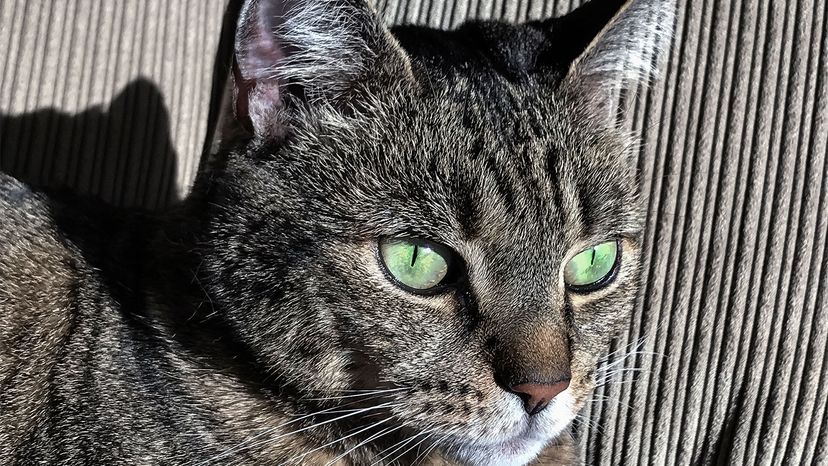Checking Your Cat's Eyes

Learning more about your cat's eyes in general can you determine if he's healthy. Let's break down each part of the eye to find out what constitutes normal and what doesn't.
A cat's pupils can look like anything from vertical slits, to the classic spindle-shaped "cat's eye," to full dilation — big black dots that take up all of the colored part of the eye. Certain diseases, including trouble in a cat's nervous system, can cause the pupils to be noticeably different sizes. A cloudy, milky or filmy look to the pupils might be a sign of cataracts, viral ulcers or other vision problems.
Advertisement
The iris is the colored part of the eye. Cats usually have some variety of green, yellow or blue eyes. Occasionally, a cat will be "odd-eyed"; each eye is a different color. If you notice changes in your cat's iris or the appearance of splotches of other colors, contact your vet. It's not unusual for the iris to change with age. Old cats' irises may degenerate and take on dark, freckle-like spots, but this isn’t always a sign of trouble.
The "white" of the eye is officially known as the sclera. Obviously, this should be white (perhaps with some small blood vessels visible). Yellow or "bloodshot" sclera, ulcers or splotches of color, and signs of damage (like scrapes or bruises) are indicators of trouble.
Conjunctiva is the pink, fleshy stuff under the eyelids that helps hold the eye in place. You usually don't notice the conjunctiva unless it swells up, in which case it may protrude from under the eyelid, giving the eye a "meaty" appearance.
The third eyelid, or nictitating membrane, appears when your cat blinks or closes his eyes; this wonderful adaptation moves from the inside corner of the eye to cover the front surface of the eyeball. Again, it's something you rarely notice unless there's a problem. One of the ways cats announce that they don't feel well is when their third eyelids are up — that is, they've moved partially across the eyeball.
If you notice any type of injury or abnormality with your cat's eyes, take him or her to the vet immediately to get it checked out.
Cats run hotter than humans, but that doesn't mean that they can't get fevers. How can you tell if your cat is feeling feverish? Find out next.